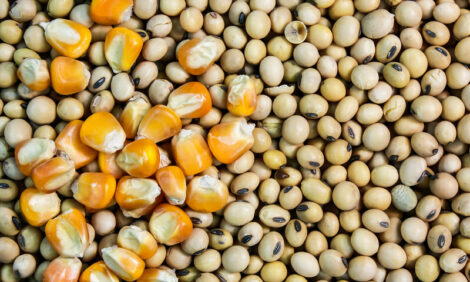



Producer Survey: Majority of Dairy Producers Approve
US - While milk may be their No. 1 commodity, a notable 68 percent of dairy producers surveyed said they approve of the $1-per-head beef checkoff program they contribute to as beef producers, according to recent independent research of dairy producers commissioned by the Cattlemen’s Beef Promotion and Research Board.“Nearly a quarter of the beef supply in the United States comes from dairy beef. That’s why the beef checkoff considers dairy producers an important segment of the beef industry,” said Cattlemen’s Beef Board member Jenny Senn, a dairy producer from Silverstreet, S.C. “It’s encouraging to see from the latest survey results that so many dairy producers approve of their beef checkoff investment, and are informed about where that money is going and the type of programs their checkoff dollars support.”
The dairy industry is well represented on the Cattlemen’s Beef Board, with 15 dairy producers sitting on the board that administers all national checkoff-funded programs. Dairy producers’ investment into the beef checkoff funds six different areas —promotion, research, consumer information, industry information, foreign marketing and producer communications. Beef checkoff programs such as nutrition research and youth initiatives help build demand by educating consumers about the lean and nutrient-rich qualities of beef.
A recent example is a checkoff-funded on-pack nutrition labeling test project in the Midwest that showed consumers are more likely to shop at stores that featured nutrition-labeled meat. Indiana’s Marsh Supermarkets Inc. held a 16-week project to test consumers’ responses to fresh meat nutrition labeling in the meat case. The beef labels emphasized beef as a good source of Zinc, Iron, protein and many B-vitamins. The percentage of consumers who said they believed beef was healthier than they’d previously thought jumped 45 percent following the nutrition-labeling project. Beef dollar sales increased by four to six points at participating retail stores.
Another important program that helps build beef demand by reaching out to younger consumers is the checkoff’s youth education initiative. In the past 10 years, the checkoff has invested nearly $2.5 million in classroom programs to reach more than 25 million children with information about beef nutrition. The checkoff’s latest education project is Choose Well — a school curriculum kit mailed last summer to 10,000 teachers across the nation to help them teach fourth and fifth graders about “power foods” such as beef.
“Dairy producers are often so busy with milk production that they tend to overlook the fact that they are also beef producers,” Senn said. “It’s important for them to understand how their beef checkoff investment is funding research and consumer programs that help build demand for dairy beef.”
The survey, conducted by Aspen Media & Market Research, examined attitudes of 1,225 U.S. beef, dairy and veal producers nationwide. The Beef Board conducts producer surveys regularly to gauge producers’ economic moods and their expectations of checkoff investments, as well as checkoff program familiarity, strengths or weaknesses. The bi-annual surveys are funded with checkoff monies. The results are presented at summer and winter cattle industry conferences.
TheCattleSite News Desk


